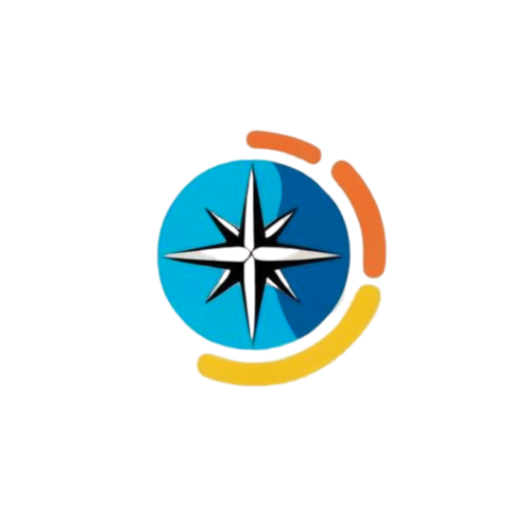Historical Timeline
Circa 2nd century BCE – Early kingdoms such as the Srivijaya and Majapahit civilizations established in Indonesia
1511 (Friday, August 30) – The Portuguese establish a trading post in Malacca, beginning European colonial influence in Southeast Asia
1602 (Thursday, March 20) – Dutch East India Company established, beginning Dutch colonial rule
1942 (Sunday, March 1) – Japanese occupation during World War II, following the Dutch defeat
1945 (Friday, August 17) – Indonesia declares independence from the Netherlands
1949 (Monday, December 27) – The Dutch-Indonesian Round Table Conference leads to formal recognition of Indonesian independence
1965 (Monday, September 30) – Indonesian Massacre: A military coup attempt and subsequent mass killings of communists and leftists
1997-1998 – Asian Financial Crisis: Indonesia suffers severe economic contraction and a period of political instability, leading to the resignation of President Suharto
2004 (Sunday, December 26) – Indian Ocean Tsunami: A devastating tsunami, triggered by a massive earthquake, kills over 200,000 people across the region, including Indonesia
2009 (Wednesday, September 30) – Sumatra Earthquake: A 7.6 magnitude earthquake kills at least 1,100 people in Padang
2010 (Saturday, October 30) – Mount Merapi Eruption: A major eruption of Merapi volcano in Java kills over 300 people
2018 (Monday, December 22) – Sunda Strait Tsunami: A tsunami caused by the eruption of Mount Anak Krakatau kills over 400 people along the coastlines of Sumatra and Java
2021 (Saturday, April 10) – COVID-19 pandemic: Indonesia becomes one of the hardest-hit countries in Southeast Asia by the COVID-19 pandemic
2022 (Saturday, November 5) – Mount Semeru Eruption: A powerful eruption in East Java causes widespread damage and loss of life
General Information
Continent: Asia
Location: Southeast Asia and Oceania, spanning more than 17,000 islands, located between the Indian and Pacific Oceans
Capital: Jakarta
Language: Indonesian (official)
Currency: Indonesian Rupiah (IDR)
Population: ~276 million (last updated: April 2025)
Time Zone: Western Indonesia Time (WIB, UTC +7), Central Indonesia Time (WITA, UTC +8), Eastern Indonesia Time (WIT, UTC +9)
Topography
Borders: Malaysia (on the island of Borneo), Papua New Guinea (on the island of New Guinea), East Timor (on the island of Timor)
Landscape: Indonesia consists of a series of islands, with rugged mountains, coastal plains, and tropical forests
Major Rivers: Kapuas River, Mahakam River, Barito River, Musi River, Citarum River
Major Mountains: Mount Kerinci (3,805 m, the highest volcano in Sumatra), Mount Semeru, Mount Rinjani, Mount Merapi, Mount Bromo
Deserts: Indonesia does not have any true deserts due to its tropical climate
Lakes: Lake Toba (the largest volcanic lake in the world), Lake Maninjau, Lake Singkarak
Volcanoes: Indonesia is home to some of the world’s most active volcanoes, including Mount Merapi, Mount Sinabung, Mount Krakatoa, Mount Tambora, and Mount Bromo
Highest Point: Puncak Jaya – 4,884 m (16,024 ft)
Lowest Point: Indian Ocean – 0 m (sea level)
Climate: Indonesia has a tropical climate with two distinct seasons: a rainy season (November to March) and a dry season (April to October)
Geological Features: Indonesia sits on the Ring of Fire, a seismically active zone in the Pacific Ocean that experiences frequent volcanic eruptions and earthquakes. The region is highly prone to natural disasters due to tectonic activity, especially along the boundaries of the Indo-Australian, Eurasian, and Pacific Plates.
Demography
Ethnic Groups: Predominantly Javanese (~40%), Sundanese (~15%), Malay (~3%), with hundreds of other ethnic groups throughout the archipelago
Religion: Islam (~87%), Christianity (~10%, including Protestantism and Catholicism), Hinduism (~1.7%), Buddhism (~0.7%), and others
Urban Population: ~56% (last updated: 2023)
Population Notes: Indonesia is the world’s largest Muslim-majority country and is home to a large number of ethnic groups, cultures, and languages.
Culture
Famous For: Batik, Wayang Kulit (shadow puppetry), Gamelan music, Bali beaches, volcanoes, Komodo dragons, and Islamic art
Cuisine: Nasi Goreng, Satay, Rendang, Gado-Gado, Soto, Tempeh, Mie Goreng
Arts: Traditional dance (e.g., Balinese dance), wood carving, silverwork, batik textile art
Sports: Football (soccer), Pencak Silat, Badminton, Volleyball
Music: Gamelan (traditional Javanese ensemble), Dangdut (popular music), Indonesian pop
Dance: Legong dance, Saman dance, Tari Kecak, Topeng dance
Economy
Economy Type: Mixed economy with significant government involvement and a growing private sector
GDP: Approx. $1.4 trillion USD (last updated: 2024)
Major Industries: Petroleum, natural gas, mining, textiles, agriculture, automotive, electronics
Key Exports: Palm oil, coal, petroleum, textiles, rubber, coffee, tea, cocoa, and furniture
Unemployment Rate: ~5.6% (last updated: 2024)
Economic Regions: Java is the country’s economic heartland, with significant activity in Jakarta, Surabaya, and Bandung. Bali and Sumatra are also important tourist destinations, and Kalimantan (Borneo) is an important region for natural resources like timber.
Government
Government Type: Unitary presidential republic
Head of State: President Joko Widodo (as of April 2025)
Head of Government: President Joko Widodo (as of April 2025)
Legislature: People’s Consultative Assembly, a bicameral body consisting of the People’s Representative Council and the Regional Representative Council
Constitution: In effect since August 18, 1945
Travel Attractions
Bali: Famous for its beaches, temples, and resorts
Jakarta: The bustling capital with vibrant city life, shopping, and historical sites
Yogyakarta: Known for the ancient Borobudur temple and Prambanan temple complex
Komodo Island: Home of the Komodo dragon, a UNESCO World Heritage site
Bromo-Tengger-Semeru National Park: Famous for active volcanoes and stunning landscapes
Lake Toba: The largest volcanic lake in the world, located in Sumatra
Lombok: Known for its beaches, hiking, and stunning nature
Ubud: A cultural center in Bali with traditional arts and wellness tourism
